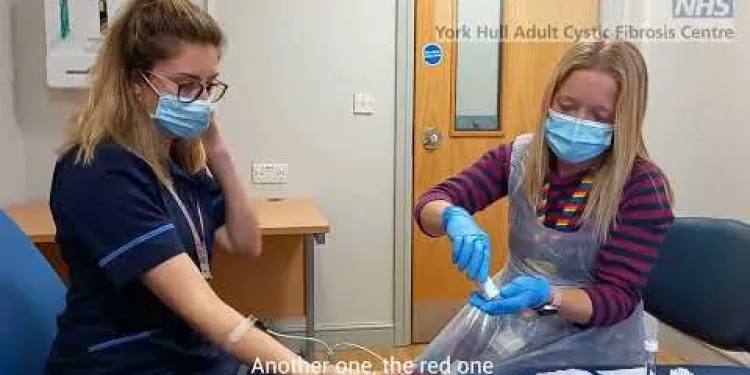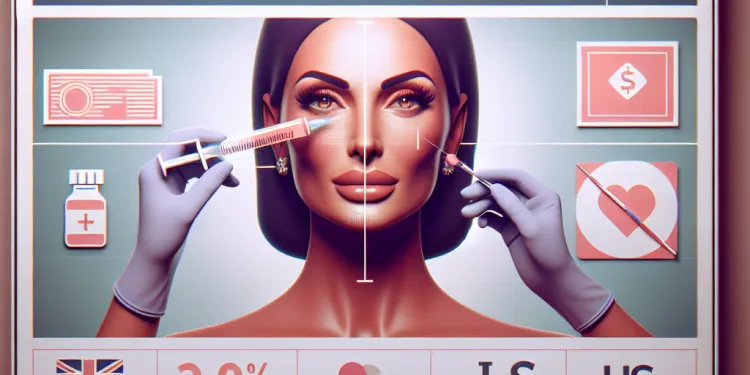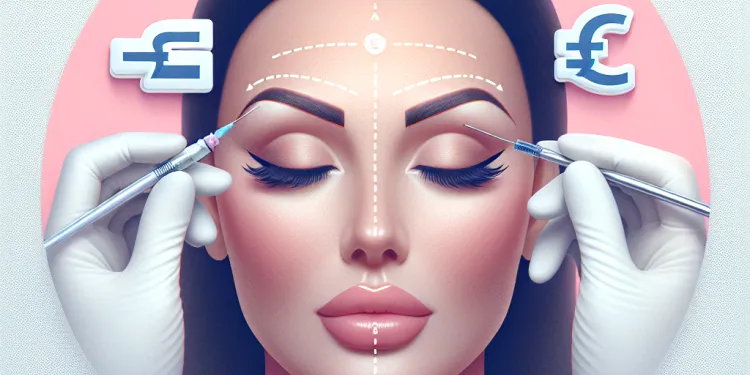
Find Help
More Items From Ergsy search
-

Can Botox help with excessive sweating?
Relevance: 100%
-

What is Botox used for?
Relevance: 52%
-

What is Botox?
Relevance: 51%
-

What are the common uses of Botox?
Relevance: 49%
-

What areas can be treated with Botox?
Relevance: 47%
-

Can Botox be used for treating conditions other than wrinkles?
Relevance: 47%
-

Is Botox safe?
Relevance: 44%
-

How does Botox work?
Relevance: 42%
-

How long has Botox been used in medicine?
Relevance: 40%
-

Can anyone get Botox treatments?
Relevance: 40%
-

What is Botox made from?
Relevance: 39%
-

How does Botox work if it's related to botulism toxin?
Relevance: 39%
-

Is Botox safe?
Relevance: 38%
-

Sweat test | Diagnosing cystic fibrosis
Relevance: 37%
-

Can Botox cause serious health issues?
Relevance: 36%
-

What are the side effects of Botox?
Relevance: 36%
-

Is Botox vegan?
Relevance: 35%
-

How long do the effects of Botox last?
Relevance: 35%
-

How long does Botox last?
Relevance: 34%
-

Is Botox treatment expensive?
Relevance: 33%
-

Can I get Botulism from Botox Treatments?
Relevance: 33%
-

Does Botox hurt?
Relevance: 33%
-

Who can administer Botox?
Relevance: 33%
-

Can Botox lift my eyebrows?
Relevance: 32%
-

Can Botox be used for migraines?
Relevance: 32%
-

What are the side effects of Botox?
Relevance: 32%
-

Does Botox injection hurt?
Relevance: 32%
-

Are there any long-term effects of using Botox?
Relevance: 31%
-

Can I get Botox while pregnant?
Relevance: 31%
-

How much does Botox cost?
Relevance: 31%
-

How often should I get Botox treatments?
Relevance: 30%
-

How soon will I see results from Botox?
Relevance: 30%
-

What precautions should I take before getting Botox?
Relevance: 30%
-

How should I prepare for a Botox appointment?
Relevance: 30%
-

How should I choose a provider for Botox treatments?
Relevance: 29%
-

What should I do if I experience side effects after a Botox injection?
Relevance: 28%
-

Can Botox spread to other parts of the body?
Relevance: 28%
-

Is it safe to go abroad for medical treatments such as botox?
Relevance: 21%
-

Can I get botulism from Botox treatments?
Relevance: 21%
-

What are some signs of heat exhaustion?
Relevance: 20%
Understanding Excessive Sweating
Excessive sweating, also known as hyperhidrosis, is a condition characterised by abnormally increased perspiration. It affects both men and women, often beginning in adolescence. While sweating is a natural bodily function necessary for regulating temperature, hyperhidrosis goes beyond the normal needs of the body. This condition can lead to significant discomfort, embarrassment, and social anxiety. In the UK, it is estimated that about 1% of the population suffers from this condition, impacting their daily life.
Botox as a Treatment
Botulinum toxin, commonly known as Botox, is well-known for its use in cosmetic procedures to reduce wrinkles. However, it also has applications in treating various medical conditions including hyperhidrosis. In the UK, Botox is approved for the treatment of excessive sweating especially in cases where topical treatments, such as antiperspirants, have proven ineffective. Botox is particularly effective for focal hyperhidrosis, which commonly affects the underarms, hands, feet, among other areas.
How Botox Works for Hyperhidrosis
Botox works by blocking the chemical signals sent from the nerves that stimulate the sweat glands. When these sweat glands do not receive the necessary chemical signals, severe sweating is reduced. The procedure involves injecting small amounts of Botox into the skin where the excessive sweating is occurring. For most individuals, significant reduction in sweating can be observed within a few days of treatment.
The Procedure and Effectiveness
The procedure to treat hyperhidrosis with Botox is relatively quick and simple. It involves using a fine needle to deliver small injections of Botox into the affected area. A topical anaesthetic may be applied to the skin beforehand to minimise discomfort during the procedure. The effects of Botox treatment are temporary, typically lasting between 4 to 12 months. Many patients report a marked decrease in sweating and an improvement in quality of life post-treatment.
Considerations and Side Effects
While Botox is generally considered safe, there are potential side effects and considerations. Some individuals may experience mild pain or bruising at the injection sites. In rare cases, there may be other side effects like muscle weakness near the injected area. It is important for patients to consult with a qualified healthcare professional or dermatologist in the UK to discuss the suitability of Botox for their hyperhidrosis. Additionally, Botox treatment for hyperhidrosis may not be covered by NHS and might incur personal medical expenses.
Conclusion
For those suffering from the discomfort and social implications of excessive sweating, Botox offers a promising treatment option. With its ability to effectively reduce sweating in targeted areas, many individuals find relief and regain confidence. Anyone considering Botox for hyperhidrosis treatment should discuss their options with a healthcare provider to understand the potential benefits and risks. Booking a consultation with a specialist is an advisable first step towards managing this condition effectively.
Understanding Excessive Sweating
Excessive sweating is when a person sweats a lot more than normal. This is also called hyperhidrosis. Both boys and girls can have this problem, and it often starts when they are teenagers. We all sweat to cool down, but people with hyperhidrosis sweat much more than they need to. This can make them feel very uncomfortable and embarrassed. In the UK, about 1 out of every 100 people has this problem. It can make life hard for them.
Botox as a Treatment
Botox is a well-known treatment used to reduce wrinkles. But it can also help people who sweat too much. In the UK, doctors use Botox to help when things like antiperspirants don't work. Botox is really good at helping people who sweat a lot in certain places, like under the arms, on hands, or feet.
How Botox Works for Hyperhidrosis
Botox stops the messages from nerves that tell sweat glands to make sweat. When the sweat glands don’t get these messages, they stop making too much sweat. The doctor puts small amounts of Botox into the skin where the sweating is bad. Most people sweat less after a few days.
The Procedure and Effectiveness
Getting Botox to help with sweating is quick and easy. The doctor uses a tiny needle to give the Botox injections in the spots where you sweat a lot. Sometimes a numbing cream is put on the skin to help it not hurt. The effects don’t last forever; they usually last 4 to 12 months. Many people say they sweat less and feel better after the treatment.
Considerations and Side Effects
Botox is usually safe, but there can be side effects. Some people might feel a little pain or see bruises where they got the injection. Rarely, muscles near the area might feel weak. It’s important to talk to a doctor to make sure Botox is right for you. In the UK, Botox for sweating might not be free, and it could cost you money.
Conclusion
If you sweat too much and feel uncomfortable, Botox might help you. It can make you sweat less in certain places, and many people feel better about themselves after treatment. Talk to a doctor to learn more about the good and bad sides of Botox. It’s a good idea to meet with a specialist to find out if this treatment is right for you.
Frequently Asked Questions
What is Botox?
Botox is a brand name for a neurotoxin produced by the bacterium Clostridium botulinum, used in medical treatments to reduce the appearance of facial wrinkles and treat various medical conditions.
Can Botox help with excessive sweating?
Yes, Botox can be used to treat excessive sweating, a condition known as hyperhidrosis.
How does Botox work for excessive sweating?
Botox works by blocking the nerves that trigger sweat glands, reducing the amount of sweat produced in the treated area.
Which areas can be treated with Botox for sweating?
Common areas treated with Botox for excessive sweating include the underarms, palms, soles of the feet, and forehead.
Is Botox treatment for sweating permanent?
No, Botox treatment for excessive sweating is not permanent. Its effects usually last between 4 to 12 months, after which the treatment may need to be repeated.
How long does it take for Botox to reduce sweating?
It typically takes 1 to 2 weeks to notice a significant reduction in sweating after a Botox treatment.
Is the Botox procedure for excessive sweating painful?
The procedure may cause some discomfort as it involves multiple injections, but it is generally well tolerated. A numbing agent can be applied to reduce discomfort.
Are there any side effects of using Botox for sweating?
Possible side effects may include localized pain, swelling, bruising, or headache. More serious side effects are rare.
Who is a suitable candidate for Botox treatment for sweating?
Individuals suffering from primary axillary hyperhidrosis (excessive underarm sweating) who have not had success with other treatments may be suitable candidates.
Do I need a prescription for Botox to treat excessive sweating?
Yes, Botox for excessive sweating is a medical treatment and requires a prescription from a healthcare provider.
How is Botox administered for hyperhidrosis?
Botox is administered through small injections directly into the skin of the area experiencing excessive sweating.
How much does Botox treatment for excessive sweating cost?
The cost can vary widely depending on the regional prices, the provider, and the amount of Botox used, but it typically ranges from several hundred to over a thousand dollars.
Is Botox for excessive sweating covered by insurance?
Insurance coverage varies, but some insurance plans may cover Botox treatments for excessive sweating if they are deemed medically necessary.
How should I prepare for a Botox session for sweating?
Your healthcare provider will inform you about any specific preparations, but generally, you should avoid shaving the area to be treated and stop using certain skin products a few days before the procedure.
Where is Botox for hyperhidrosis commonly injected?
Common injection sites for treating hyperhidrosis with Botox are the underarms, hands, feet, and sometimes the forehead.
Can everyone receive Botox for excessive sweating?
Most people who experience excessive sweating can be treated with Botox, but it's important to discuss potential risks and benefits with a healthcare provider.
How effective is Botox for treating hyperhidrosis?
Botox is considered a very effective treatment for excessive sweating, with many patients experiencing significant reductions in sweat production.
What should I do if I experience side effects from Botox?
If you experience any severe or concerning side effects after receiving Botox, contact your healthcare provider immediately.
What are the long-term benefits of using Botox for sweating?
The long-term benefits of using Botox for sweating include reduced sweat production in treated areas, leading to improved comfort and confidence.
Can Botox be combined with other treatments for excessive sweating?
Botox can be part of a broader treatment plan for hyperhidrosis, which may include topical treatments, oral medications, or lifestyle changes, as advised by a healthcare provider.
What is Botox?
Botox is a medicine that helps stop some muscles from moving. People use it to help stop wrinkles on their face. It can also help with other problems, like bad headaches. Doctors give Botox using a small needle. If you want more help or have questions, you can ask a friend or a doctor to explain it to you.
Botox is a special medicine made by a tiny germ. Doctors use it to help people look younger by making wrinkles on the face look smaller. It can also help with some health problems.
Can Botox help if you sweat too much?
Do you sweat a lot? Botox might help with that.
Botox can stop the nerves that make you sweat too much. This can help you feel more comfortable.
If you sweat a lot, you can talk to a doctor. They will know if Botox is right for you.
You can also try these ideas:
- Wear light clothes.
- Drink water to stay cool.
- Use antiperspirant to keep dry.
Yes, Botox can help if you sweat too much. This problem is called hyperhidrosis.
How does Botox help stop too much sweating?
Botox can help people who sweat a lot. It works by stopping the signals from the brain that tell the sweat glands to sweat.
If you sweat too much, ask a doctor about Botox. A doctor can put Botox under the skin to help stop the sweating.
Tools like visual aids (pictures) can also help you learn more about how Botox works.
Botox stops certain nerves from making you sweat. This means you sweat less in the areas where you've had Botox.
Where can you use Botox to help stop sweating?
Doctors use Botox to help stop too much sweating. They might use Botox on your underarms, hands, feet, and forehead.
Does Botox stop sweating forever?
No, Botox for too much sweating does not last forever. It works for about 4 to 12 months. After that, you might need to do it again.
How long before Botox helps stop sweating?
Botox can help stop sweating. It might take a few days to work.
Here's what happens:
- After you get Botox, you wait.
- It can take 2 to 4 days to start working.
- Sometimes, it takes up to 2 weeks to work fully.
Do you feel worried or have questions? Here are some things you can do:
- Talk to a doctor. They can help you.
- Use a calendar to track when you get Botox and when it starts working.
After getting a Botox treatment, it usually takes 1 to 2 weeks to see less sweating.
Does Botox hurt when used for sweating too much?
The doctor might use a needle, and it can hurt a bit. But most people are okay with it. They can use a special cream to make it hurt less.
Does Botox for sweating cause any problems?
When you use Botox to help with sweating, sometimes it can cause a few problems. These are called side effects. Here are some things that might happen:
- You might feel sore where you got the Botox. - Your skin might be a little red or swollen. - Sometimes, other muscles may feel weak.
It's important to talk to a doctor if you feel worried. They can help you understand what's going on.
Here's a tip to help you: try using a picture or video to learn more about what happens during the treatment. It can make things clearer!
Sometimes, people might feel a bit of pain or see some swelling where they got the shot. They might also get a bruise or have a headache. More serious problems are very rare.
Who can get Botox treatment for sweating?
Botox can help if you sweat a lot. A doctor can check if it is right for you. Here are some things that might help you know if Botox is a good choice:
- Do you sweat too much even when you are not hot or exercising?
- Have you tried other treatments and they did not work?
- Are you healthy with no major health problems?
- Are you an adult? Botox is usually for adults.
If you think Botox might help you, talk to your doctor. They can give you advice. It’s also good to have someone you trust to help you understand the information.
People who sweat a lot under their arms might be able to try this if other treatments have not worked for them.
Do I need a doctor's note to use Botox for heavy sweating?
Yes, Botox can help if you sweat too much. It is a type of medical treatment.
A doctor needs to give you a prescription to use this treatment.
How do you get Botox for too much sweating?
Doctors can use an injection called Botox to help people who sweat a lot. This happens when your body makes too much sweat, even when you're not hot or exercising.
Here's how they do it:
- The doctor puts a special needle into your skin where you sweat too much, like under your arms or on your hands.
- The needle gives a tiny shot of medicine called Botox. This helps your body make less sweat.
- The doctor might give you many tiny shots in the area.
If you're nervous about the needles, you can:
- Take deep breaths to stay calm.
- Ask someone you trust to come with you.
- Bring a toy or music to help you feel better.
Talk to your doctor if you have questions. They can help you understand.
Botox is given with tiny needles. It goes straight into the skin where there is too much sweating.
How much does Botox for sweating cost?
Do you sweat a lot? Botox can help with that. Here is what you need to know:
1. Cost: How much money do you need? Botox prices may change. It is good to ask the doctor.
2. Ask for help: A caregiver or a friend can go with you to the doctor.
3. Use tools: A calculator can help you see if you can pay for Botox.
The cost of Botox can be very different. It depends on where you live, who gives it to you, and how much you need. But usually, it can cost a few hundred dollars to more than a thousand dollars.
Will my insurance pay for Botox to stop too much sweating?
Insurance plans are different, but some might pay for Botox if you sweat too much. The doctor needs to say it is important for your health.
How do I get ready for a Botox session for sweating?
Your doctor or nurse will tell you what to do to get ready. Usually, you should not shave the area that will be treated. Don't use some skin creams a few days before the treatment.
Where do doctors usually put Botox for too much sweating?
Doctors use Botox to help with too much sweating. They often put it in these places:
- Under the arms
- Hands
- Feet
- Sometimes the forehead
If reading is tricky, try using a pencil to follow the words or ask someone to read with you.
Can anyone get Botox to help with too much sweating?
Many people sweat too much. Botox can help with this. Talk to a doctor about the good and bad things about using Botox.
Does Botox help with extra sweating?
Botox can be used to help stop too much sweating. It blocks the signals that tell your body to sweat. Many people find it works well for them.
If you or someone you care for wants to try Botox, talk to a doctor. They can give you advice and explain how it works.
Tools like picture charts or speaking apps can help understand more. These tools can explain how Botox works in a simple way.
Botox can really help if you sweat a lot. Many people find they sweat much less after getting Botox.
What if I feel unwell after Botox?
If you feel unwell after getting Botox, there are some things you can do:
1. **Tell an adult:** Let someone you trust know how you feel.
2. **See a doctor:** A doctor can help you. They know what to do.
3. **Rest:** Take it easy and give your body time to feel better.
It is important to talk to someone if you feel bad. You can use simple words to tell them what is wrong. Try pointing at where it hurts or using pictures if it helps.
If you feel really sick after getting Botox, call your doctor right away.
What good things happen if you use Botox for sweating for a long time?
Botox can help with sweating for a long time. It makes you sweat less in the places where you get the treatment. This can help you feel more comfortable and confident.
Can Botox be used with other treatments to help stop too much sweating?
Botox can help with too much sweating. Doctors might suggest using it with other things like creams, pills, or changes in daily habits.
Useful Links
- Ergsy carfully checks the information in the videos we provide here.
- Videos shown by Youtube after a video has completed, have NOT been reviewed by ERGSY.
- To view, click the arrow in centre of video.
- Most of the videos you find here will have subtitles and/or closed captions available.
- You may need to turn these on, and choose your preferred language.
- Go to the video you'd like to watch.
- If closed captions (CC) are available, settings will be visible on the bottom right of the video player.
- To turn on Captions, click settings .
- To turn off Captions, click settings again.
More Items From Ergsy search
-

Can Botox help with excessive sweating?
Relevance: 100%
-

What is Botox used for?
Relevance: 52%
-

What is Botox?
Relevance: 51%
-

What are the common uses of Botox?
Relevance: 49%
-

What areas can be treated with Botox?
Relevance: 47%
-

Can Botox be used for treating conditions other than wrinkles?
Relevance: 47%
-

Is Botox safe?
Relevance: 44%
-

How does Botox work?
Relevance: 42%
-

How long has Botox been used in medicine?
Relevance: 40%
-

Can anyone get Botox treatments?
Relevance: 40%
-

What is Botox made from?
Relevance: 39%
-

How does Botox work if it's related to botulism toxin?
Relevance: 39%
-

Is Botox safe?
Relevance: 38%
-

Sweat test | Diagnosing cystic fibrosis
Relevance: 37%
-

Can Botox cause serious health issues?
Relevance: 36%
-

What are the side effects of Botox?
Relevance: 36%
-

Is Botox vegan?
Relevance: 35%
-

How long do the effects of Botox last?
Relevance: 35%
-

How long does Botox last?
Relevance: 34%
-

Is Botox treatment expensive?
Relevance: 33%
-

Can I get Botulism from Botox Treatments?
Relevance: 33%
-

Does Botox hurt?
Relevance: 33%
-

Who can administer Botox?
Relevance: 33%
-

Can Botox lift my eyebrows?
Relevance: 32%
-

Can Botox be used for migraines?
Relevance: 32%
-

What are the side effects of Botox?
Relevance: 32%
-

Does Botox injection hurt?
Relevance: 32%
-

Are there any long-term effects of using Botox?
Relevance: 31%
-

Can I get Botox while pregnant?
Relevance: 31%
-

How much does Botox cost?
Relevance: 31%
-

How often should I get Botox treatments?
Relevance: 30%
-

How soon will I see results from Botox?
Relevance: 30%
-

What precautions should I take before getting Botox?
Relevance: 30%
-

How should I prepare for a Botox appointment?
Relevance: 30%
-

How should I choose a provider for Botox treatments?
Relevance: 29%
-

What should I do if I experience side effects after a Botox injection?
Relevance: 28%
-

Can Botox spread to other parts of the body?
Relevance: 28%
-

Is it safe to go abroad for medical treatments such as botox?
Relevance: 21%
-

Can I get botulism from Botox treatments?
Relevance: 21%
-

What are some signs of heat exhaustion?
Relevance: 20%


